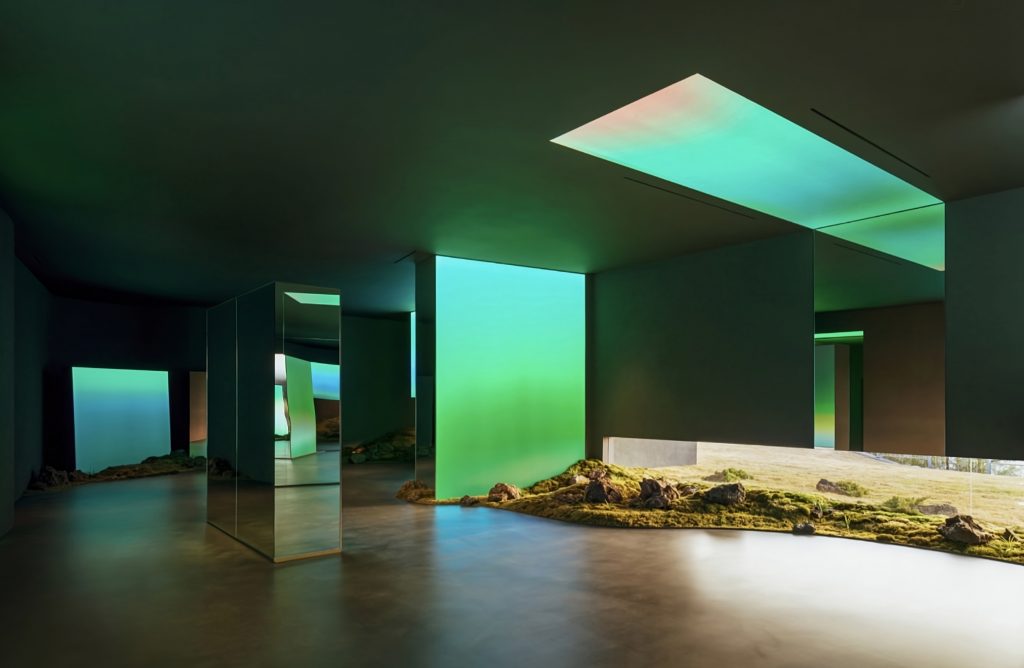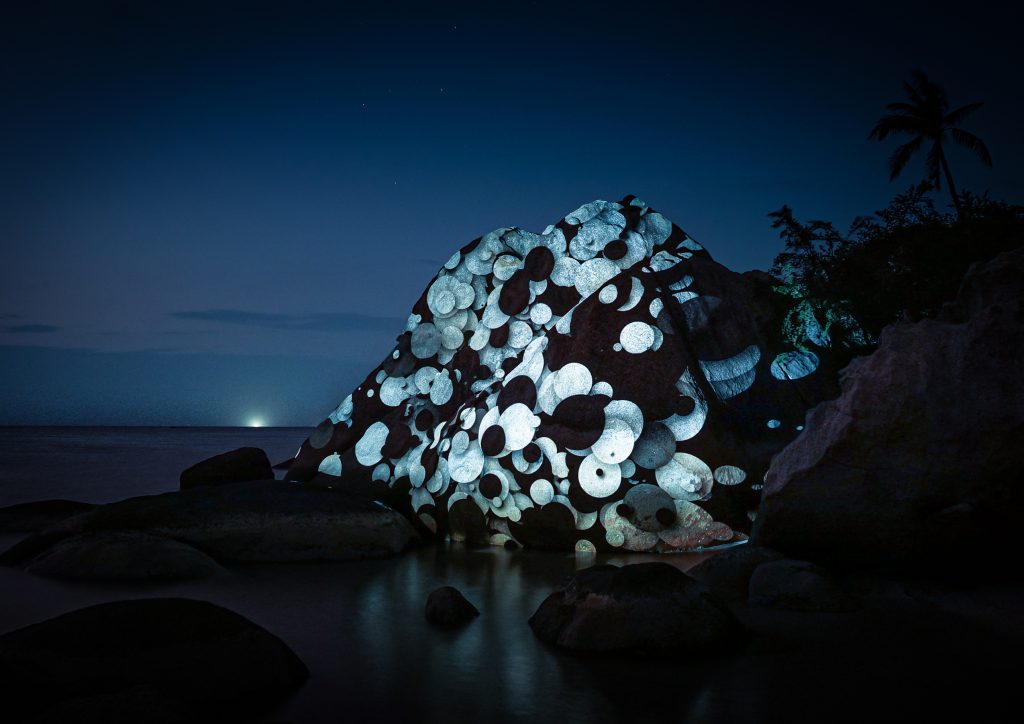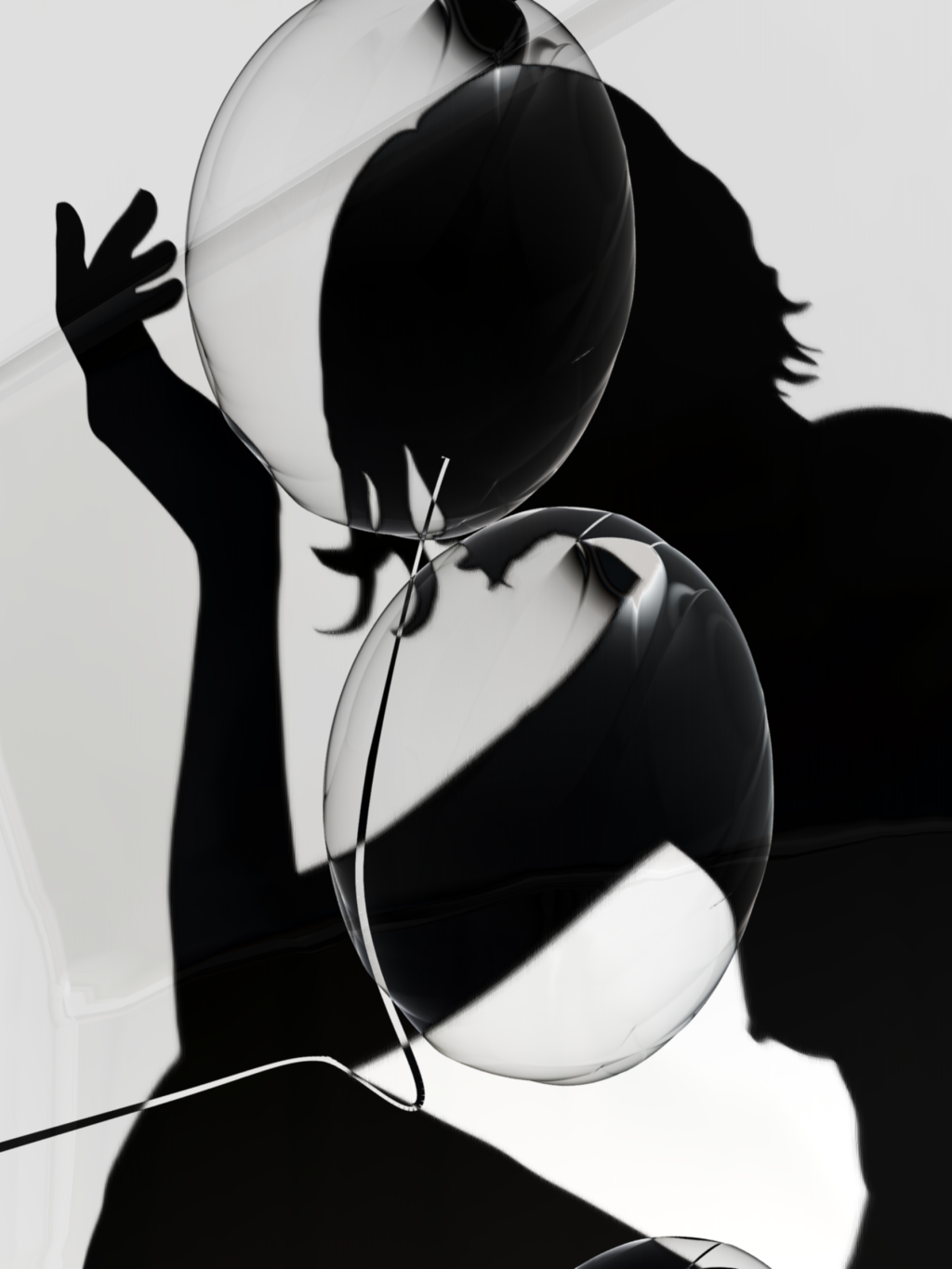Art as Ritual w/Ellio D’Anna
What happens when code meets ceremony, or when generative art becomes a portal to presence? In a time where digital innovation often outpaces human connection, Encounters—a collaborative project by Scorpios and HOFA (House of Fine Art)—offers a striking alternative: a space where art, ritual, and technology coexist not in tension, but in harmony. HOFA co-founder Elio D’Anna says this collaboration is the declaration of how art, ritual, and technology can shape culture.
We step into the evolving world of Encounters—a curatorial experiment grounded in transformation, storytelling, and sensory immersion. From the windswept shores of Mykonos to the reflective rhythms of Bodrum, the project’s second edition deepens the relationship between audience and artwork, blurring the line between observer and co-creator. This is a new blueprint for cultural transformation.
Could you tell us about the ‘Encounters’ project you developed with Scorpios? How did it come to life and how is it progressing?
Encounters emerged from a shared vision between Scorpios and our team at HOFA to explore how digital and spiritual realms can coexist in meaningful, transformative ways. It began as a dialogue around creating immersive experiences that engage not just the senses, but also the soul. What started in Mykonos has now evolved into a platform for artistic exchange, combining generative art, ritual, and nature. Each edition deepens the conversation, bringing together artists and audiences in a space that invites reflection, connection, and transformation.
‘Ever After’ is described as “a reflection on how creativity, code and ritual can help us design lives that grow, adapt and endure.” How do these concepts resonate within the selection?
‘Ever After’ reflects our belief that creativity is a living system capable of adapting, regenerating, and sustaining meaning over time. The works we curated echo this philosophy: generative art that evolves, code-based works that respond to the environment such as the Maja Petric work, and pieces rooted in ritual practices as the upcoming Operator live performance and art release. These are not static visuals, they are living expressions designed to interact with the viewer’s own journey toward longevity, balance, and harmony.
This project embraces the boundless world of digital arts through female artists with an approach centred on memory, transformation, and creativity. How does the selection of artwork intertwine with the world of Scorpios?
Scorpios is a space where transformation, both personal and collective is central. Working with visionary female artists who engage memory and identity allowed us to channel that spirit. Their work often bridges ancient feminine wisdom with future-facing tools like AI and machine learning. This synergy mirrors the essence of Scorpios: rooted in the elemental, but constantly reaching for new forms of expression and connection.

Courtesy of Krista Kim and HOFA
“Art is not decoration at Scorpios, it’s initiation. It sets the tone for everything that happens there.“
-Ellio D’Anna
The concepts of tradition and ritual have both a harmonic and contrasting relationship with the digital nature of the exhibition. Could you elaborate on this yin-yang?
This duality is at the heart of Encounters. Technology is often seen as cold and futuristic, while ritual is seen as sacred and ancestral. But when we bring them together, something powerful happens. The digital becomes a vessel for the spiritual; the ritual is reimagined through code. It’s not contradiction, it’s integration.
From your perspective, what does art mean within the DNA of Scorpios?
Art is not decoration at Scorpios, it’s initiation. It sets the tone for everything that happens there. It’s how we enter altered states, how we reconnect with ourselves and with each other. Whether through light sculptures, sound, or digital form, art at Scorpios is a portal to presence. It helps us pause, feel, and open to the unknown.
What were the focal sensitivities in your curation? In the second edition of Encounters, which artists come together and with what perspectives?
For this edition, we focused on artists exploring the interplay between organic systems and intelligent machines. We looked for works that were generative, meditative, and site responsive. Artists like Sasha Stiles merge the algorithmic with the emotional, the mathematical with the mystical. We curated through resonance, not just aesthetic.
“Technology is often seen as cold and futuristic, while ritual is seen as sacred and ancestral. But when we bring them together, something powerful happens. The digital becomes a vessel for the spiritual; the ritual is reimagined through code. It’s not contradiction, it’s integration.”
– Elio D’Anna
What reflections or imprints do the selected works have on your own life? When and how did you encounter them?
Many of these works found me in moments of personal transition—where I was questioning structure, identity, or rhythm. Sougwen’s robotic drawing rituals, for instance, resonated with my own search for a balance between control and surrender. Refik Anadol use of AI felt like dreaming in code. These pieces aren’t just artworks to me; they are mirrors and companions on the journey.
How has the definition of the “observer” changed in this mutual relationship between human and digital work?
The observer is no longer passive. In the generative age, the viewer becomes co-creator. Your presence, movement, data, even your breath can influence a work. We’ve moved from viewing to experiencing, from spectating to participating. The line between artist and audience is beautifully blurred.
Is there a metric for creativity? What is the curator’s recipe when bringing works together?
Curating is like composing music: it’s about rhythm, silence, tension, release. You listen to the works, to the space, and to the context. My “recipe” includes intuition, cultural relevance, and emotional coherence. If the works speak to each other and to the audience, then something true is happening.

“Technology is often seen as cold and futuristic, while ritual is seen as sacred and ancestral. But when we bring them together, something powerful happens. The digital becomes a vessel for the spiritual; the ritual is reimagined through code. It’s not contradiction, it’s integration.”.
-Ellio D’Anna

Courtesy of Operator and HOFA
Where does storytelling sit within this equation?
Storytelling is the connective tissue. It turns fragmented experiences into journeys. Every Encounters edition is a narrative where the visitor steps in as protagonist. We create mythologies, modern rituals, and symbolic arcs through the selection and sequencing of the artworks. Storytelling gives shape to the abstract and meaning to the immersive.
How do you see the role of the curator evolving within this process of digital transformation?
The curator is becoming more of a systems thinker. We’re not just selecting works; we’re designing ecosystems. That includes interactivity, data ethics, technological interfaces, and emotional engagement. The curator now navigates between the technological and the metaphysical. We’re not just gatekeepers; we’re choreographers of experience.
At which points does Scorpios’ philosophy intersect with HOFA?
Both Scorpios and HOFA believe in art as transformation. We value authenticity, ritual, and pushing boundaries artistically and experientially. Scorpios creates physical environments that elevate consciousness, while our gallery HOFA and our tech company Kreation build the narrative and digital layers that expand that intention into new dimensions.
How does the element of space come into play when it comes to a work interacting with the viewer? How does the ritual space affect the selection of works?
The space is never neutral. Especially in a ritual context, it becomes part of the artwork’s energy field. We select works that listen to the space through movement, light, reflection and rhythm. In Mykonos and Bodrum, the sea, wind, and architecture shape how the pieces live. Viewers arrive expecting more than an exhibition, they expect transformation. So the space must guide the encounter, and the works must feel alive within it.
Should we expect a third edition of Encounters? What is this collaboration between the two institutions evolving into?
Yes, the third edition is already in the works. We see Encounters not as a series of exhibitions, but as a living framework growing with each location, artist, and audience. The partnership between Scorpios and HOFA is evolving into a long-term vision for how art, ritual, and technology can shape culture. This is just the beginning.
Duygu Bengi In Conversation with Ellio D’Anna